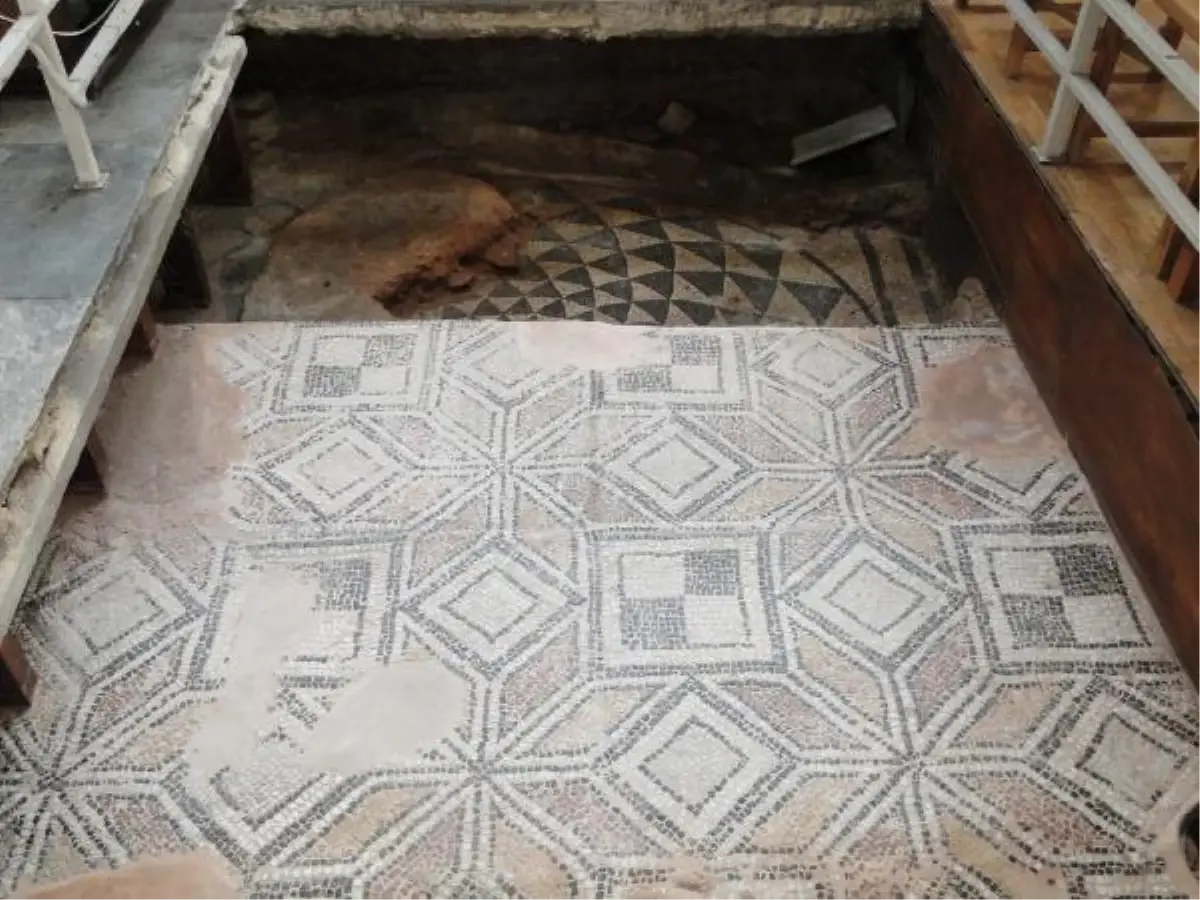
Antalya Cultural Heritage Preservation Regional Board determined that the upper opening of the dome, which is thought to have been left unfinished in the church of St. Nicholas (Santa Claus), is the same as the architecture of the Church of the Holy Sepulcher, where Jesus Christ was crucified and ascended to the sky. Chairman of the Board Prof. Dr. Osman Eravşar explained that this is the most important discovery and finding regarding the exact location of his tomb, said that the fresco of Jesus was revealed on the ground where Nikolaos set foot.
Antalya Cultural Heritage Preservation Regional Board President Prof. Dr. Osman Eravşar announced discoveries of great importance in the church in Demre, named after St. Nicholas, known as 'Santa Claus', who was born and lived in Antalya. Eravşar pointed out that the church was built in the 7th-8th century over the early church of which St. Nicholas was the bishop, which was flooded with the rise of the sea during the Middle Ages. Eravşar said that the discoveries belonged to the early church, which was buried under alluvial deposits from the period when St. Nicholas lived.
THE GROUND ON WHICH ST. NICHOLAS STOODIt was stated that the church in the 3-4th century, where St. Nicholas lived, was buried 7-8 meters as a result of the rising waters in the Mediterranean. Pointing out that the current church was built in the 7th-8th century, Eravşar announced that the ground on which Santa Claus stepped had been discovered.Eravsar stated: "When the screed floor slab laid in the 1970s was removed where it was, an excavation was carried out to find out what's under it. The result was an early 4th-century floor covering of the church. The current church is later dated. There are some architectural traces in various parts of the early period structure, but there were no traces in terms of flooring. This is an emerging, perhaps earlier, flooring. Our friends who made the excavation are preparing the publication of this. This is the floor of the period he lived in, and we are talking about the floor on which St. Nicholas' feet stepped. This is an extremely important discovery, the first find from that period. Therefore, we see this church as a discovery that will increase its architectural history and its iconographic value a bit more. It will be covered with a certain technique and made ready for display."THERE MAY BE RELICS FROM SANTA CLAUSNoting that some of St. Nicholas' relics are exhibited in Italy and some of them are exhibited in Antalya Museum, Eravşar continued as follows: "There are probably other bones that are said to belong to him, or at least other iconographic fragments. Of course, the church has a special position today, unfortunately, due to the rising seawater in the region, the church from the early period is almost 2 meters below sea level. This causes flooding from time to time. As a result of the rising waters of the Mediterranean in this region, alluviums filled the church. We don't know exactly how low it is. However, if a geophysical survey is conducted in this region, can we find it, I think, is a question mark. Because geophysical studies have some distractors, one of them is the humidity in the field. If there is intense moisture and water, no results can be obtained. In that case, the only thing we can do left is to excavate that area. If these are done by the excavation heads in the future, this information will come out more concretely and we will learn new things."SANTA'S LAST PLACESaint Nicholas, known to the whole world as 'Santa Claus', was born in Patara, one of the important port cities of the period, which hosted the Lycian Union Parliament Building. He was born in 300 BC as the son of a wealthy wheat merchant. St. Nicholas, who went from Patara in Kas district to Myra in Demre district, lived here for many years and served as a bishop. The Church where St. Nicholas served as a bishop, has a very sacred value in the Christian world, especially for the Orthodox. Thousands of tourists visit this place every year. While there are frescoes belonging to St. Nicholas on the walls of the church, there is also a sarcophagus from the Roman Period decorated with fish scales and acanthus leaves, which is thought to belong to him.
(Photos)
Son Dakika › Güncel › Discovery in Santa Claus Church: His grave and where he stood were found - Son Dakika
Masaüstü bildirimlerimize izin vererek en son haberleri, analizleri ve derinlemesine içerikleri hemen öğrenin.
Sizin düşünceleriniz neler ?